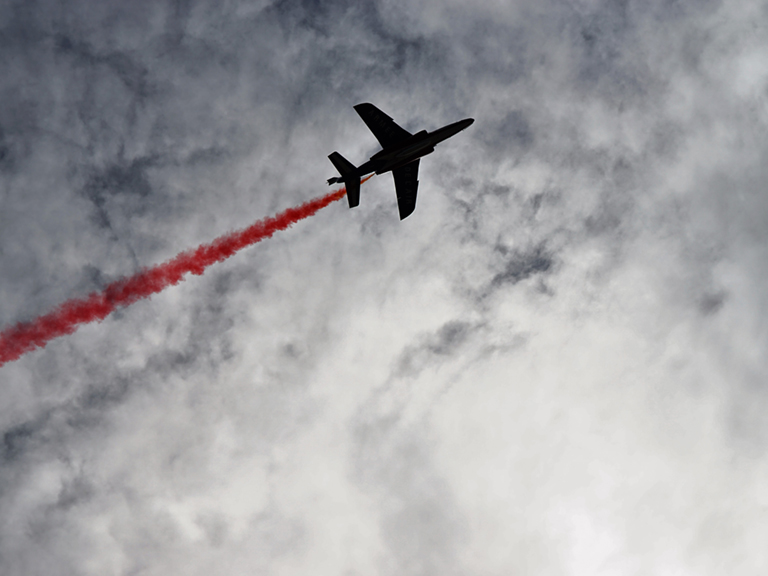On May 22, 2010, a total of 158 out of 166 passengers on board Air India Express Flight 812 from Dubai to India got killed when the plane crashed in Mangalore. Mr. Mahendra Kodkany,45-year-old man, Regional Director for Middle East of a UAE-based company was one of the victims. The NCDRC awarded a sum of Rs.7.35 Crores to his wife, son, and daughter. The Supreme Court enhanced the compensation to Rs 7.64 crore plus 9% interest per annum in March 2020.
In two other accidents of March 10, 2019 of Ethiopian Airlines and that of Indonesian Lion Air on October 29, 2018 – Both involving Boeing 737 MAX planes resulted into loss of more than 300 lives leaving several others injured. Lawyers say that relatives of passengers killed in the Boeing 737 Max crashes have been cheated out of compensation. Their family members were persuaded to sign forms preventing them from taking legal action.
It has also been reported that some relatives were made to sign similar agreements after crashes, stopping them from suing Boeing in the US courts. It is being said that legal heirs are victimized three times- “First by the crash, when they lose their loved ones, next, by the insurance company that wants them to sign off on something that is significantly lower than what a case would get in the court room and finally they get victimized by lawyers, who start making promises of unrealistic amounts of money they’ll be getting in just a few months.
On 7thAugust,2020 an Air India Express Boeing 737 Vande Bharat repatriation flight from Dubai carrying 190 people broke apart after going off the runway at Kozhikode airport killing 20 people, including the two pilots and injuring many. Immediately after the crash it was reported in some sections of media that legal heirs of deceased would get Rs. 14 Lacs each.
In the backdrop of above facts let us analyse the liability of Air Carriers with specific reference to death/injury to passengers.
Aircraft accidents are extremely complex from a technical perspective, as are the laws that apply to them. There is an international legal regime governing the liability of air carriers for injury or death of their passengers and other damages. However, there is no international law per se which is binding on any country but over a period of time , several conventions (Warsaw convention 1929 , Hague Protocol 1955) came into existence which were ratified /adopted by the countries from time to time.
In order to modernize and replace the existing Warsaw System of Liability and for the Unification of Certain rules for International Carriage by Air, Montreal Convention, was signed on 28th May 1999 in Montreal and was adopted by 52 states. It came into force on 4th November 2003.
In India, The Carriage by Air Act, 1972 deals with rules /regulations of Air carriage ratified the Warsaw Convention and the Hague Protocol and became part of Indian law. However, from1972 to 2009, India functioned under very low carrier liability regime as set forth in the provisions of the 1929 Warsaw Convention reflected in First Schedule to the Act and the Hague Protocol, 1955 carrier liability regime as reflected in Second Schedule to the Act. India ratified Montreal Convention 1999 on 30th June 2009 and became 91st country to have and the Convention became effective for India and Carriage by Air Act, 1972 was amended in July,2009 to incorporate the provisions of the convention.
The liability and defences of carriers have been redefined after ratification of Montreal Convention which has been adopted by more than 133 countries.
The carrier is liable for death or bodily injury of a passenger provided the accident takes place on board the aircraft or in the course of any of the operations of embarking or disembarking. But interestingly the term “Accident” has not been defined in Montreal Convention. In one of the cases reported in Austria in December 2019, a girl travelling with her father sustained a scalding injury when a hot drink placed on an adjacent tray table tipped over and split the contents onto her chest causing injury but the airline refused to pay the compensation on the ground that it is not an Air accident as per Montreal Convention. The case was however decided in her favour because Supreme Court held that in the absence ofdefinition of “Accident” in the MC, its ordinary meaning shall be applicable.
MC99 abolished the arbitrary limits that existed under the Warsaw Convention system and holding the Air carrier automatically liable, it introduced a two-tier strict liability regime without any financial limits for death / injury to passengers. This means that it is presumed that aviation accidents are clearly not the passenger’s fault.
For claims up to 1,00,000 SDR the passenger does not have to prove what the pilot or airline did wrong and the carrier cannot contest claims for compensation.
The limit of SDR 1,00,000 was inserted in the original MC with a proviso that this limit of liability would be reviewed every five years by ICAO and if the review concludes that the inflation factor has exceeded 10 percent, then liability will be revised suitably. Accordingly, the limit of liability has been revised twice since 1999 (SDR 1,13,100 in December 2009 and SDR 1,28,821 w.e.f. 28th December 2019). This amount is the outer limit and does not mean that each passenger will get paid out this amount automatically. The quantum of compensation payable is calculated on the basis of various parameters which interalia includes age, employment status, family and dependents loss of future income, future prospects etc. This means that the carrier is liable to pay compensation depending on the assessment of the quantum of damage he has suffered.
In respect of claims in excess of SDR 1,00,000 (Current limit SDR 128 821) ,the carrier can defend itself against a claim by proving that the damage did not result from the negligence or wrongful act of the air carrier, or it resulted from the negligence or wrongful act of a third party. As a result, claim in excess of SDR 1,00,000 (Current limit SDR 128 821) may succeed unless the carrier can show that it was not guilty of negligence in causing death or injury. Thus, the possibility of uncompensated losses in a major aircraft accident case is significantly reduced.
Now there is a provision for making advance payments also so as to give immediate relief to passengers who have suffered an injury during an aviation accident. The aim is to help people who have suffered such injuries to meet their immediate economic needs. Such advance payments shall not constitute a recognition of liability and may be offset against any amounts subsequently paid as damages by the carrier.
The limits of compensation were fixed in terms of Special Drawing Rights (SDR) which is an artificial national currency set by the International Monetary Fund based on defined basket of five currencies – the U.S. Dollar, the Euro, the Chinese Renminbi, the Japanese Yen and the British pound sterling. The conversion of SDRs into national currencies is relatively easier task. It also takes care of exchange rate fluctuation which may happen if compensation is linked to one currency only
The Montreal Convention does not permit recovery of punitive damages or damages for purely psychological trauma / damages for mental anguish and inconvenience caused to/suffered by a claimant. However, the surviving family members can often sue for such damages for airline accidents which are not governed by the Warsaw or Montreal Conventions.
The Warsaw System allowed only four choices of jurisdiction for filing of a claim by the passenger /legal heirs namely, place of issue of ticket, principle place of business of the carrier, the place of destination of the passenger and the place of domicile of the carrier. Through the Montreal Convention a fifth jurisdiction is added which is the place of domicile of the passenger, provided the airline has a presence there. Therefore, an Indian would be able to file claim in India even if the journey was undertaken outside India.
By amending certain provisions of the Carriage by Air Act, 1972 and to include the text of the Montreal Convention to the said Act as the Third Schedule, this would have the force of law in India in relation to any carriage by air to which those rules apply irrespective of the nationality of the aircraft performing the carriage.
The action for compensation should be brought within two years reckoned from the date of arrival at the destination, or from the date on which the aircraft ought to have arrived, or from the date on which the carriage stopped. The method of calculating the period of limitation shall be determined by the law of the court seized of the case.
The compensation for domestic carriage is governed by the legislation as applicable to different countries and in India it is regulated by Carriage by Air Act, 1972 as amended in July,2009 and notifications issued by Ministry of Civil Aviation, Government of India, from time to time and the latest being Notification No S.O. 3129(E), dated August 22, 2019. The current liability in respect of Death/Injury is up to Rs 25,50,000 per passenger and Carrier shall not be liable for compensation more than Rs 25,50,000 for each passenger, if Carrier proves that (i) such damage was not due to the negligence or other wrongful act or omission of Carrier or its servants or agents; or (ii) such damage was solely due to the negligence or other wrongful act or omission of a third party.
Hopefully, with the initiative of ICAO, more and more states will adopt MC 99 soon in the interest of air passengers for better compensation. Besides, Insurance companies and Airlines will follow the provisions of MC99 in letter and spirit and reduce litigation for prompt payment of compensation to Air accident victims and their legal heirs.


